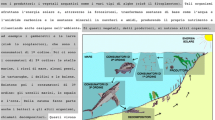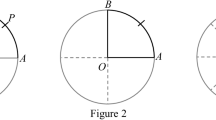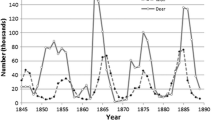Conclusion
The interpretation of scientific diagrams has been characterised as a complex process. This contrasts sharply with an apparently widespread view among producers and users of resources for science teaching that they are generally unproblematic and that their meaning is usually quite transparent. The continued currency of this view is a matter of concern, especially when resources for learning in science are now so heavily based on pictorial presentation. It is likely that students who are new to scientific diagrams as a pictorial genre will look at them in a manner that is quite different from the way they are seen by their teachers. What seems to a teacher to be a straightforward and clearly presented depiction of a scientific concept, process or structure may be a mysterious and impenetrable abstraction to a student. Whereas the teacher is able to identify readily the elements of a diagram and link them into a coherent, meaningful whole, the student may misunderstand what it is that is depicted and how the depicted entitles are related. A critical factor underlying such differences appears to be the extent and nature of the mental representation of student and teacher. Both of these aspects of the mental representation of scientific diagrams would probably have to be addressed if there are to be improvements in the development of students' diagram interpretation skills. It does not seem sufficient merely to give students a huge diet of diagrams and assume that the necessary reading skills are either present or will develop by themselves. Rather, a deliberate programme designed to develop well structured mental representations of scientific diagrams should accompany efforts to build up an extensive knowledge base about this highly specialised form of visual display. Such a programme should be accompanied by instruction that develops appropriate processing strategies that allow students to gain maximum value from the diagrams they encounter.
Similar content being viewed by others
References
ANTES, J.R., CHANG, K., LENZEN, T. & MULLIS, C. (1985) Eye movements in map reading. In R. Groner, G.W. McConkie & C. Menz (Eds.)Eye movements and human information processing. (pp. 357–373). North Holland, Elsevier.
CHASE, W.G. (1986) Visual information processing. In K. Boff, L. Kaufman & J.P. Thomas (Eds.),Handbook of perception and human performance (Vol. 2) (pp. 28.1–28.71). New York, John Wiley.
COOPER, L.A. (1980) Recent themes in visual information processing: A selected overview. In R.S.Nickerson (Ed.),Attention and performance VIII (pp. 319–345). Hillsdale, N.J., Erlbaum.
DWYER, F.M. (1967) The relative effectiveness of varied visual illustrations in complementing programmed instruction.The Journal of Experimental Education, 36, 34–42.
KIRBY, J.R. (1985, August)Map inspection during reading. Paper presented at the Joint Conference of the Australian and New Zealand Psychological Societies, Christchurch, N.Z.
KOTOVSKY, K., HAYES, J.R. & SIMON, H.A. (1985) Why are some problems hard? Evidence from Tower of Hanoi.Cognitive Psychology, 17, 248–294.
LEVIE, W.H. & LENTZ, R. (1982) Effect of text illustrations: A review of research.Educational Communication and Technology Journal, 30, 195–232.
LOWE, R.K. (in press) Search strategies and inference in the exploration of scientific diagrams.Educational Psychology.
LOWE, R.K. (1987) Mental representation and diagram interpretation.Australian Educational Researcher, 15, 37–50.
MARLAND, M. (1977)Language across the curriculum. London, Heinemann.
NEWELL, A. & SIMON, H.A. (1972)Human problem solving. Englewood Cliffs, N.J., Prentice Hall.
SHEPARD, R.N. & COOPER, L.A. (1982)Mental images and their transformations. Massachusetts, MIT Press.
SLESS, D. (1984) Visual literacy: A failed opportunity.Educational Communication and Technology Journal, 4, 224–228.
VACCA, R.T. (1981)Content Area Reading. Little, Brown and Co., Boston.
WINN, W. (1982) The role of diagrammatic representation in learning sequences, identification and classification as a function of verbal and spatial ability.Journal of Research in Science Teaching, 19, 79–89.
YARBUS, A.L. (1967)Eye movements and vision New York, Plenum Press.
Rights and permissions
About this article
Cite this article
Lowe, R. “Reading” scientific diagrams: Characterising components of skilled performance. Research in Science Education 18, 112–122 (1988). https://doi.org/10.1007/BF02356586
Issue Date:
DOI: https://doi.org/10.1007/BF02356586




